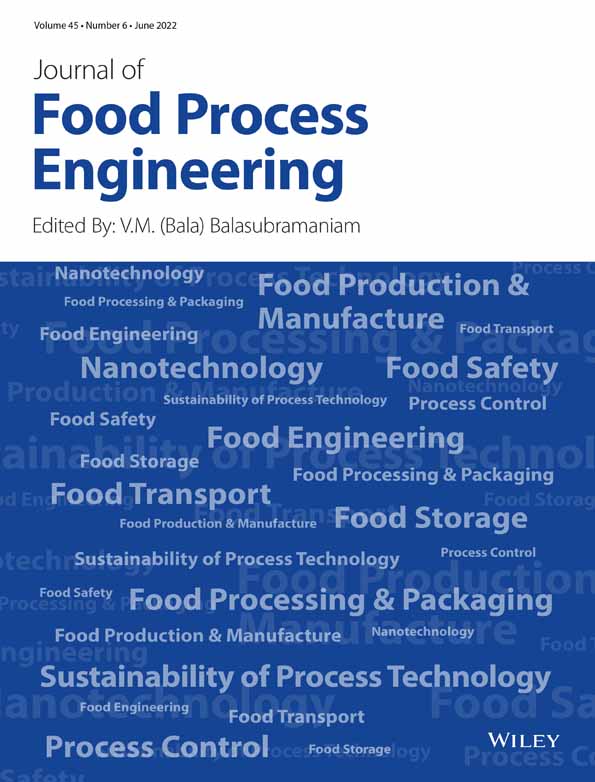Hot air-assisted continuous infrared dryer for anchovy fish drying
Funding information: Ministry of Food Processing Industries, Govt. of India, Grant/Award Number: Q-11/34/2018-R&D
Abstract
This study was performed to assess the application of a hot air-assisted continuous infrared dryer for anchovy drying and to examine the drying characteristics of small- and large-sized anchovy fish. Experiments were carried out at the infrared radiation intensities of 1,000, 2,000, 3,000 W/m2 and IR source-sample distances of 5, 10, 15 cm. The impact of IR intensity and distance between the IR source and sample on moisture content, drying efficiency, drying time, specific energy consumption, water activity, rehydration ratio, shrinkage, and surface color change were evaluated using statistical analysis. The most efficient drying parameters were observed at 2,000 W/m2, 10 cm, and 2,000 W/m2, 5 cm for small and large anchovy fish, respectively, based on the drying and quality characteristics of dried anchovy fish. This study ensured the potential application of a hot air-assisted infrared drying system to acquire dried anchovy fish with increased shelf life.
Practical Applications
Anchovies are highly nutritious and possess a lot of health benefits. They are rich in minerals, vitamins, and omega-3 fatty acids, which help to promote brain and heart health. However, they are highly perishable because of the high moisture content. Hence, the shelf life can be extended by preservation using drying techniques. Dried anchovy fish is one of the popular traditional fish products, which can be added in curries and pickles because of their strong flavor. A better drying process will be resulted in good quality dried product and fetch high demand in the market. One such better drying method is infrared radiation drying, which provides rapid heating and faster moisture removal than other drying methods. Thus, hot air-assisted infrared drying was employed in this study to produce dried anchovy fish with increased shelf life and better quality characteristics.
CONFLICT OF INTEREST
The authors declare no potential conflict of interest.
Open Research
DATA AVAILABILITY STATEMENT
Data available on request from the authors.




